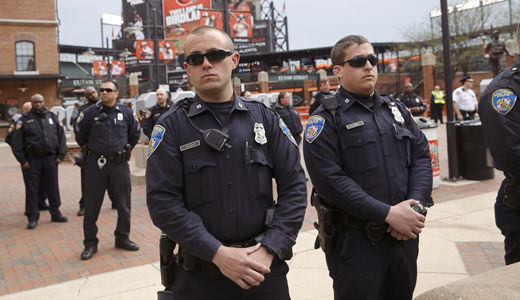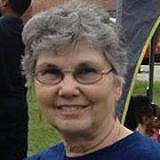
BALTIMORE-The U.S. Department of Justice delivered a stinging indictment of Baltimore City policing practices here Aug. 10 in a report entitled, “Investigation of the Baltimore City Police Department.” The 163-page report fully agrees with what many Baltimore residents claim to have witnessed and endured for many years: the racial targeting by an out-of-control police department hired to keep those communities under control.
Upon the report’s release, the Justice Department issued a press release, which states, in part, that it found “reasonable cause to believe that the Baltimore City Police Department (BPD) engages in a pattern or practice of conduct that violates the First and Fourth Amendments of the Constitution as well as federal anti-discrimination laws.”
The report details how “BPD makes stops, searches and arrests without the required justification; uses enforcement strategies that unlawfully subject African Americans to disproportionate rates of stops, searches and arrests; uses excessive force; and retaliates against individuals for their constitutionally-protected expression.”
The statement pointed out the dynamic that the longstanding BPD’s “pattern or practice” has created “community distrust of the police, particularly in the African-American community.”
According to the press release, the city of Baltimore and its police department have agreed to work together and with “community to create a federal court-enforceable consent decree addressing the deficiencies found during the investigation.”
The report contains statistics and stories covering the years 2010-2015, which have been called horrendous and unacceptable:
Over 100 civil suits alleging police brutality for which the city paid millions of dollars;
Over 300,000 pedestrian stops, 44% of which were in two police districts with an overwhelming majority African American residents;
No supervisors questioned stops and arrests;
“Grossly inadequate” handling of rape cases, even after a 2010 investigation brought about reform promises;
Strip searching people in public, in front of loved ones.
The full DOJ report can be found at: https://www.justice.gov/opa/file/883366/download
Diane Bell-McKoy, president and CEO of Associated Black Charities, told the Baltimore Aug. 11 that policing is just the tip of the iceberg of racist inequality and oppression.
“It’s not just the police. It’s everything,” she said.
After the death of Freddie Gray at the hands of Baltimore City police in April 2015, Baltimore organizations-ad hoc, new and established groups, including Black Lives Matter, labor, church, student and elected official-based from Baltimore City-rallied to bring about changes to the systemic racist practices found in the Baltimore City police department.
In addition to changes in policing, these constituent groups’ proposals and actions often dug deeper into other long-standing Baltimore issues. They addressed the continuing systemic inequalities of schooling, job opportunities and training, housing, food availability, lead paint poisoning, and high rates of incarceration that exist within many poor Baltimore communities as opposed to affluent areas of the city and surrounding counties.
The weight of the DOJ’s report may help tip the scales of justice for reform in the 2017 state legislative session. Already Baltimore City legislators are re-grouping to re-introduce legislation, which was defeated last year by heavy and sometimes intimidating lobbying by police organizations, by an unsympathetic state-wide legislature and a Republican governor.
Lest you think Baltimore is alone in its racist policing practices and systemic societal inequalities, take a look at statistics in just about ANY American city-or town, for that matter. While perhaps not as stark as in Baltimore, these systemic problems of racial injustice are endemic throughout the country.
Just this weekend, in Milwaukee, a city that had been named number one on “The Worst Cities for Black Americans” list, police shot and killed an African American man. After news of the killing spread by word of mouth and on social media, protesters took to the street Saturday night, and conflict erupted between the police and demonstrators. Businesses and a patrol car were set on fire, including a gas station.
“This is a warning cry,” Milwaukee alderman Khalif Rainey told reporters. “Black people in Milwaukee are tired,” he said. “They are tired of living under this oppression.”
He added, “What has happened may not have been right. I’m not justifying that, but nobody can deny that there are racial problems here in Milwaukee, Wisconsin, that have to be rectified, because if you don’t, you’re one day away.”
The Guardian reports, “Tensions have intensified between local black residents and police in recent weeks, in parallel with national anxieties about police abuses and violence targeted toward officers.
“In July the city saw protests over the shooting 25-year-old Jay Anderson, who was shot dead in a suburb west of Milwaukee, the 2015 shooting of 19-year-old Tony Robinson, and the 2014 killing of 31-year-old Dontre Hamilton, an unarmed man with a history of mental health problems.”
Many on the left urge investing in the impoverished communities of our country. This, they say, can only happen by freeing up funding, which now goes to a bloated U.S. military budget, and an unjust tax policy, which allows corporations and the very rich to escape their fair share of taxes. To do that voters will need to reshape the U.S. Congress, a distinct possibility if every concerned, justice-minded citizen gets to the ballot box on November 8.
Teresa Albano contributed to this story.
Photo: Baltimore police officers stand guard at Camden Yards, June 2015. (GoBlue85/Own work/CC BY-SA 4.0)









